Leeches on Colorado Tiger Salamanders
I made another visit to my Tiger Salamander Tank on the San Juan National Forest, in Southwestern Colorado. I’ve seen Leeches on the Tiger Salamander larvae on some of my previous visits and I wanted to see if I could get a better look at the them. I had very little experience in identifying Leeches, so this was going to be interesting. Okay…that was an exaggeration. I had no experience in identifying Leeches.
 Nine _Ambystoma tigrinum_ larvae in glass observation aquarium
Nine _Ambystoma tigrinum_ larvae in glass observation aquarium
I caught nine of the Tiger Salamander larvae and put them into a glass observation aquarium for photography.
The Leeches were surprisingly common on the Salamanders. On the nine Salamanders, I found four Leeches.
Below is a picture of a Leech on the tail of one of the larvae.
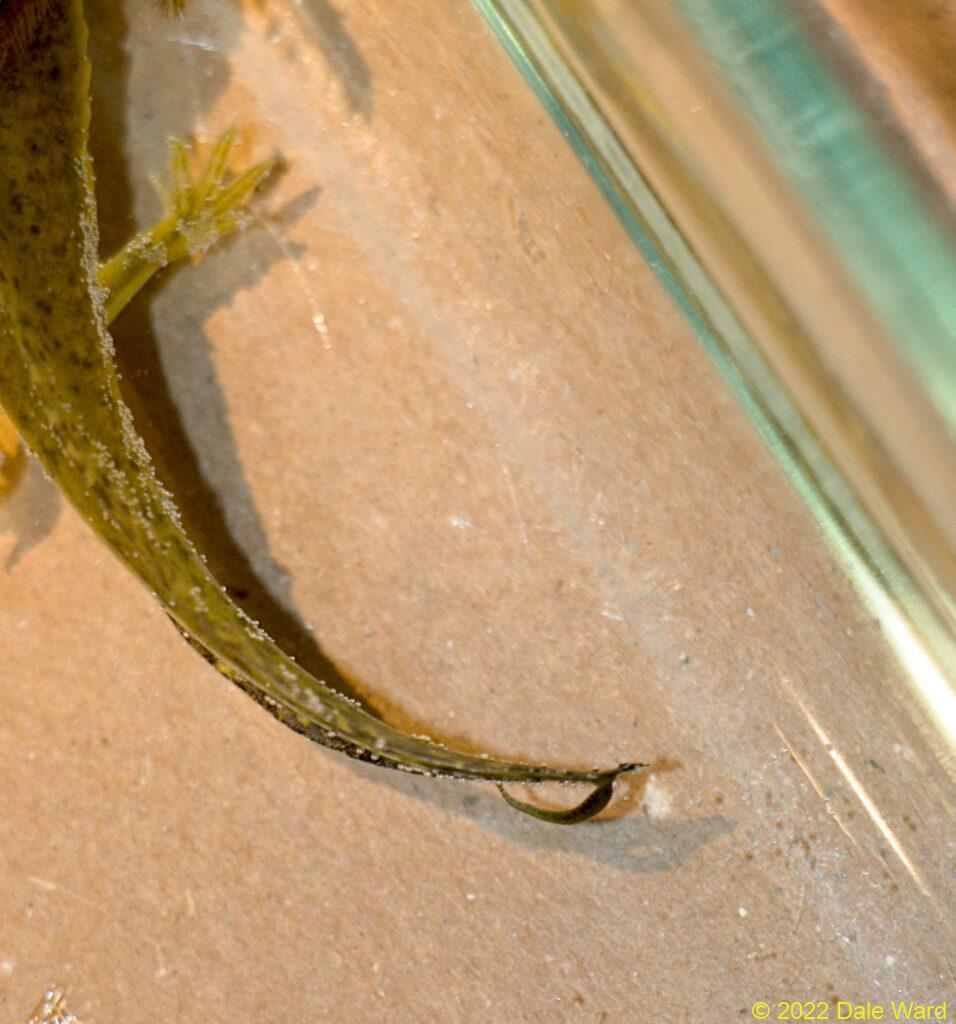 _Placobdella_ sp Leech on the tail of a Tiger Salamander larva
_Placobdella_ sp Leech on the tail of a Tiger Salamander larva
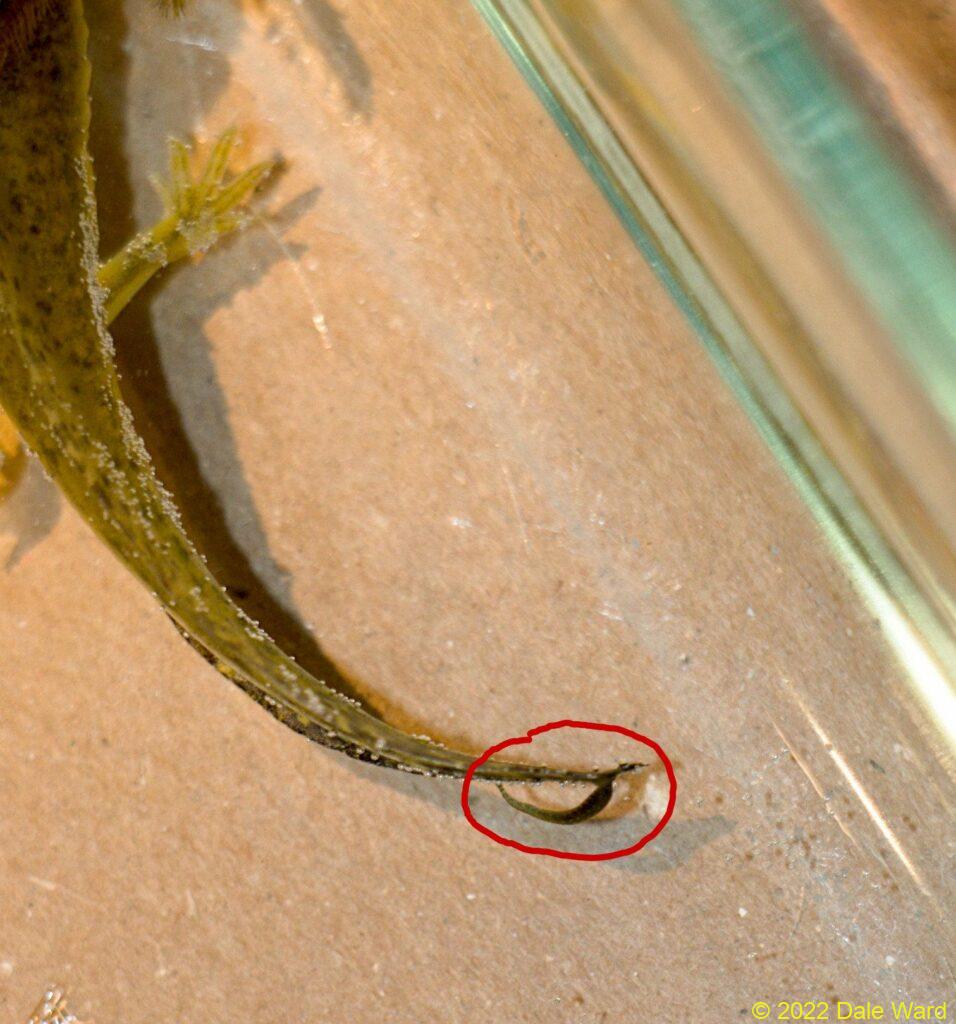 _Placobdella_ sp Leech (circled in red) on the tail of a Tiger Salamander larva
_Placobdella_ sp Leech (circled in red) on the tail of a Tiger Salamander larva
An odd thing - the bodies of the leeches weren’t flush with the bodies of the Salamander larvae. That’s how I’ve seen them other years - attached at both head and tail sucker to their larva, with the Leech bodies flush to those of the larvae.
Rather, the Leeches were either ‘inch-worming’ their way along the larvae’s bodies, pausing to reach out and ‘quest’ with their anterior ends (as in the photos above), or they were stationary, with their bodies held in a loop formation. In this ‘loop formation’, the head and tail suckers of the Leeches were very close to one another, and the bodies of the Leeches were floating freely. They reminded me of a loop of wool from a pluck on a knitted sweater.
You can see what I’m talking about in the photos below.
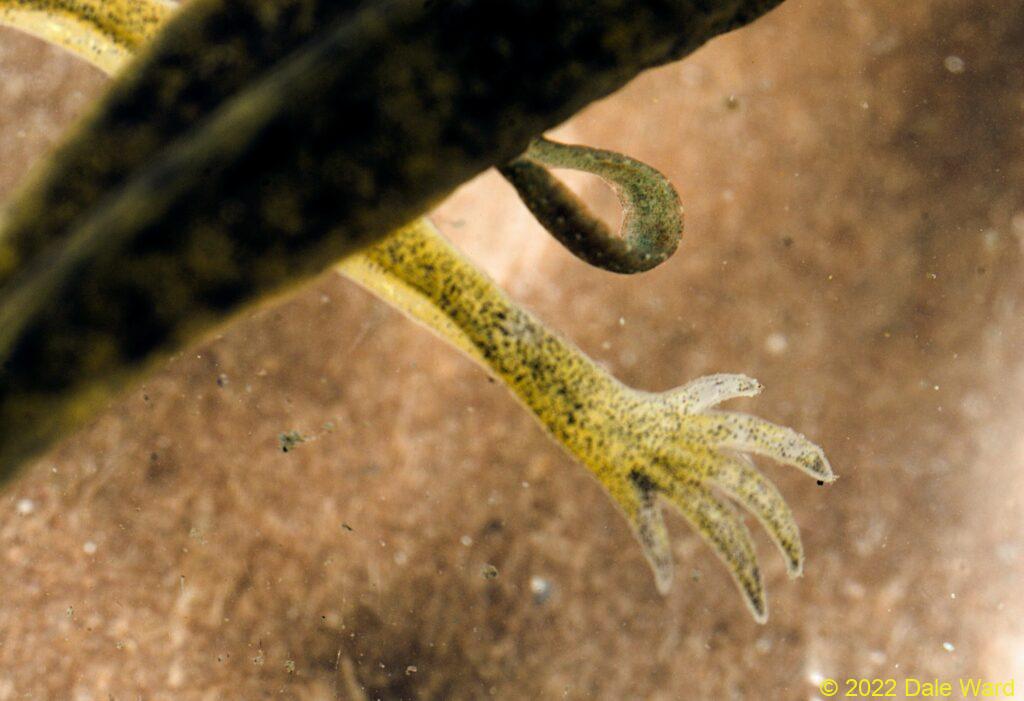 _Placobdella_ leech on body of a Tiger Salamander, near its right rear leg.
_Placobdella_ leech on body of a Tiger Salamander, near its right rear leg.
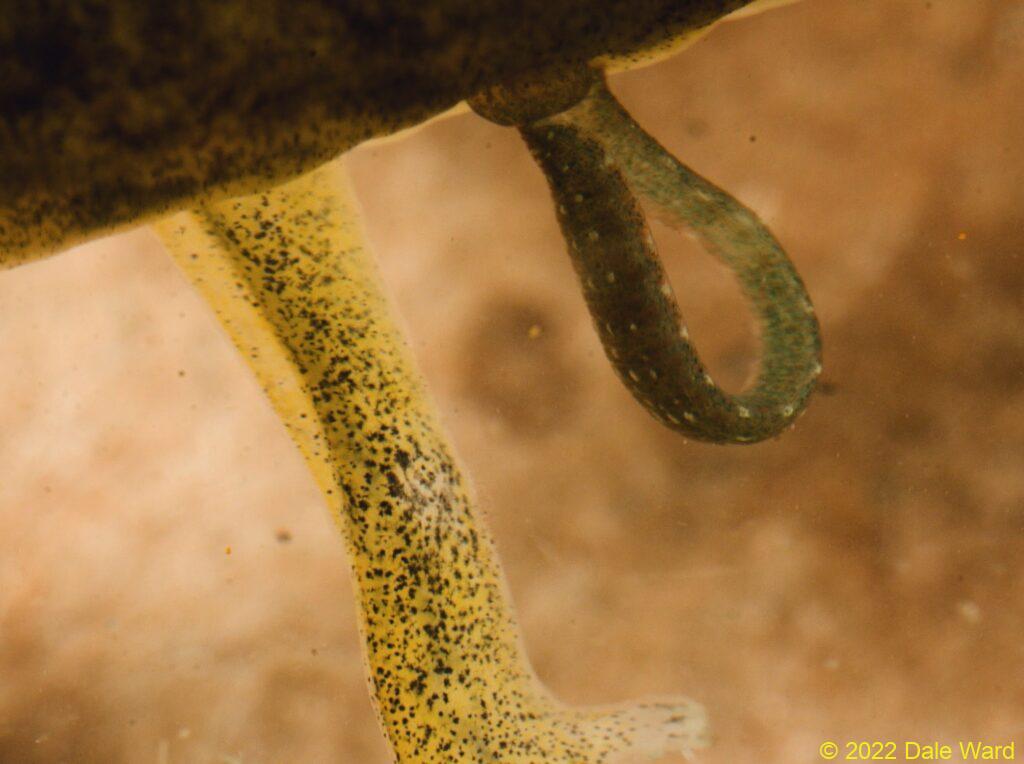 Closer view of a _Placobdella_ leech on body of a Tiger Salamander, near its right rear leg.
Closer view of a _Placobdella_ leech on body of a Tiger Salamander, near its right rear leg.
Some of the ‘questing’ Leeches came off of the larvae spontaneously, and began ‘inch-worming’ around the glass of the observation aquarium.
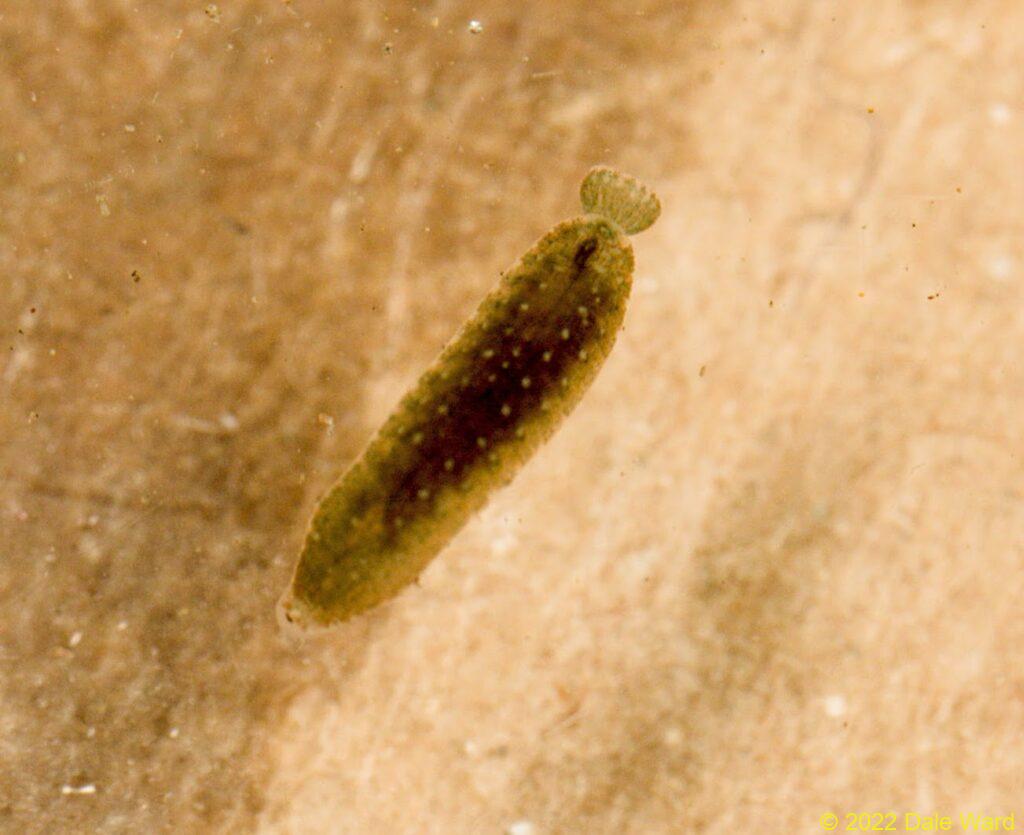 _Placobdella sp_. Leech in a contracted state, on the bottom of the glass jar. The Leech’s head is to the lower left of the photo, and its’ posterior sucker is toward the upper right.
_Placobdella sp_. Leech in a contracted state, on the bottom of the glass jar. The Leech’s head is to the lower left of the photo, and its’ posterior sucker is toward the upper right.
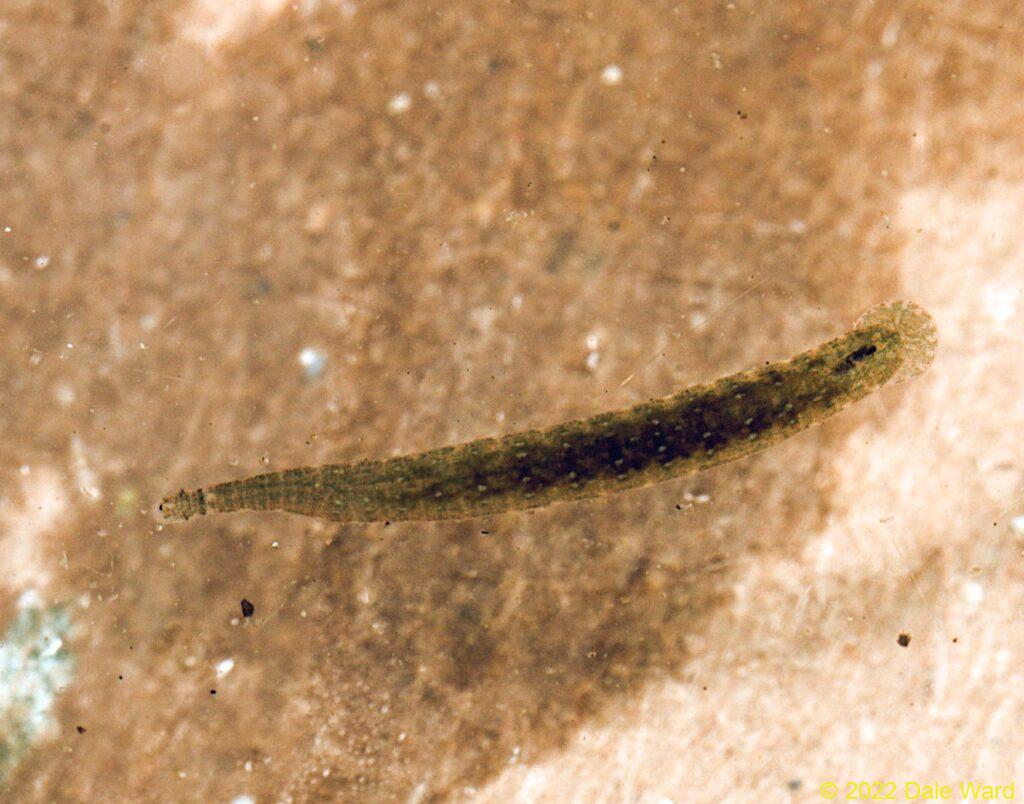 _Placobdella sp._ Leech crawling on the bottom of the glass container. Its head is to the left of the photo.
_Placobdella sp._ Leech crawling on the bottom of the glass container. Its head is to the left of the photo.
I was surprised by this behavior. I had assumed that the Leeches would stay firmly attached to the larvae until they had completed a blood meal, then swim away and hide. These Leeches seemed more tenuously attached and more willing to explore than I had expected.
I’ve tentatively identified the Leech in the photos as being in genus Placobdella. I contacted Professor Fredric Govedich at Southern Utah University to confirm the identification, and he suggests that they may be Placobdella parasitica, or perhaps Placobdella biannulata. I’d need better photos and/or specimens for a more firm identification.
I find the relationship between the Salamanders and the Leeches to be absolutely fascinating. The Leeches certainly seem to occur in high numbers - are they a threat to the health of the Salamander larvae? Why aren’t the Leeches more firmly attached to the larvae, why are they so willing to leave the larvae and explore? How does the Leech life history tie into that of the Tiger Salamanders - do the Leeches make it more likely that the Salamander larvae will metamorphose earlier?
I’ve read that Leeches are able to enter a coccooned state where they can withstand at least some desiccation. This particular cattle tank usually has at least some water in it, even in dry years. Will I find similar levels of Leeches on the Salamander larvae at the more ephemeral tanks, the ones that dry out for years at a time?
I’ve got a lot more questions than answers, as usual.
Sources:
Moser, William E., Fredric R. Govedich, Alejandro Oceguera-Fiueroa, Dennis J. Richardson, Ann J. Phillips. Subclass Hirudinida in Thorp, James H. and D. Christoper Rogers (editors). 2010. Thorp and Covich’s Freshwater Invertebrates. Volume II. Keys to Nearctic Fauna.
Many, many thanks to Dr. Fredric R. Govedich for his assistance in identifying the Leeches. I am so very grateful to researchers like him who take time to help amateurs such as myself.